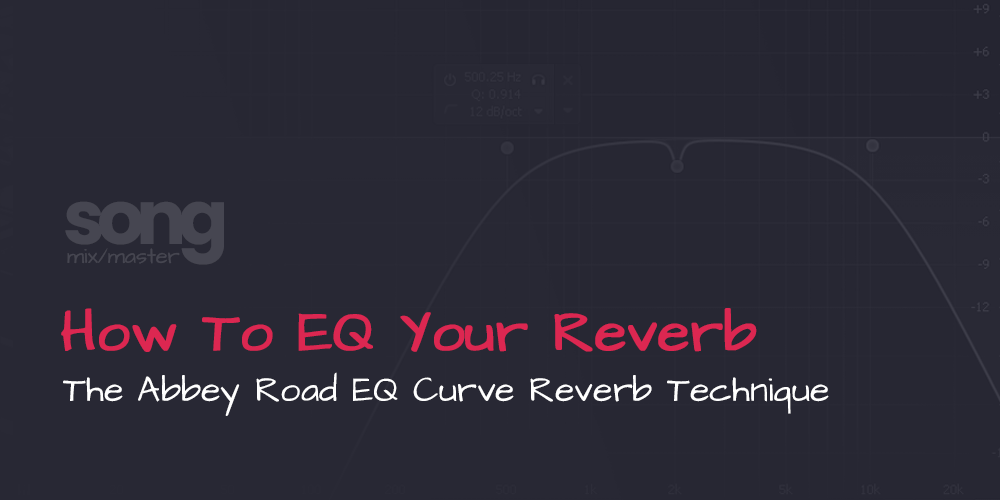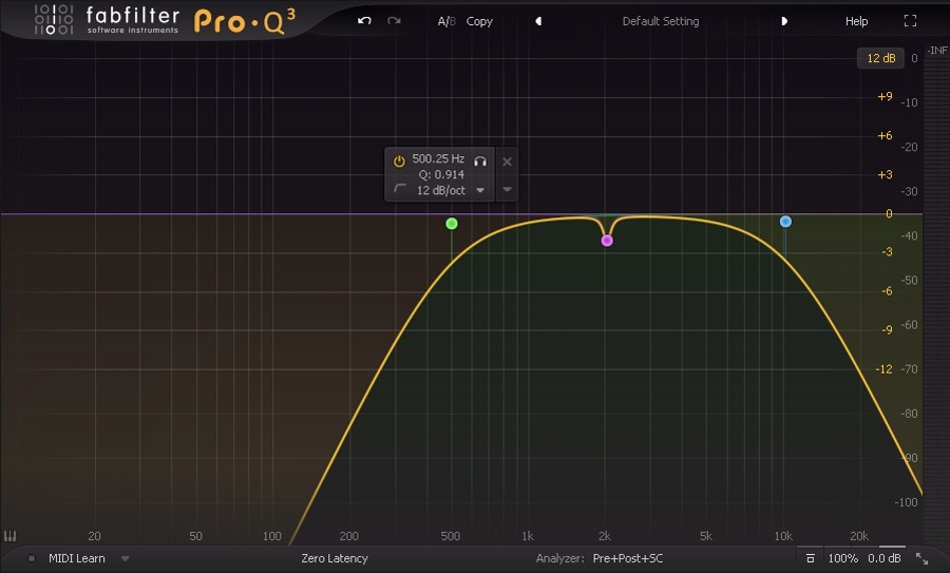Understanding the Abbey Road EQ Curve Reverb Technique
At its essence, the Abbey Road EQ Curve Reverb Technique focuses on refining reverb sends by employing strategic EQ adjustments. The goal is to remove unnecessary frequencies from the reverb signal, effectively decluttering the mix and allowing for a cleaner, more defined spatial presence.
Implementing the Abbey Road EQ Curve in Your DAW

Follow these steps to replicate the Abbey Road EQ Curve Reverb Technique in your DAW:
- Setup the Reverb Bus: Assign your favorite reverb plugin to a dedicated bus. This practice ensures a streamlined reverb application across multiple tracks.
- Send Dry Signal to Reverb: Utilize the send function on your dry track to direct an appropriate signal to the reverb bus, creating the desired level of ambiance.
- Configure Reverb Plugin for Wet Signal Only: Adjust the settings on your reverb plugin to output solely wet signals. This step ensures that the reverb bus exclusively carries reverberated sound.
- Insert EQ Before Reverb: Place an EQ plugin before the reverb plugin in the signal chain. This arrangement allows you to manipulate frequencies before they enter the reverb, shaping the tonal characteristics of the reverberated sound.
- Apply High Pass and Low Pass Filters: Set up a high-pass filter, removing frequencies below 500 Hz to eliminate low-end muddiness. Simultaneously, a low-pass filter should be established, cutting frequencies above 10 kHz to eliminate distracting high-frequency tails. On vocals, try a 1 to 4 dB drop at around 2 kHz to smooth things out (especially for a yelling tenor).
The magic of this technique lies in its ability to create spaciousness by targeting specific frequency ranges that tend to clutter reverb tails. The Abbey Road EQ Curve Reverb Technique offers a quick and effective solution to decluttering mixes by strategically removing low-end muddiness and excessive high-frequency content.
In conclusion, the Abbey Road EQ Curve Reverb Technique is a valuable tool in an audio engineer’s arsenal, facilitating the creation of cleaner and more defined mixes. This straightforward yet powerful approach allows for the precise sculpting of reverberation, resulting in an enhanced spatial presence that adds depth without overcrowding the sonic landscape.
Implement this technique in your DAW to unlock a new level of clarity and precision within your mixes. You may also like to read my article about 7 Proven Audio Mixing Tips Every Producer Should Know.



Disclaimer: Any references to any brands on this website/webpage, including reference to products, trademarks, brands and companies, are provided for description purposes only. We don't have any association with or endorsement by these brands or companies. Some of the links on our blog may be affiliate links. This means if you click on these links and make a purchase, we may earn a commission at no extra cost to you.
Check Out My New Fabfilter Pro-Q3 Presets Pack!
You may also like to read...
How To Do FL Studio Sidechain Compression Like a PRO
Choosing the Right Computer for Your Home Recording Studio
Best Affordable Studio Speakers (Monitors) For Home Studios
5 Best Compressor Plugins for Vocal Parallel Compression
Should You Master Your Own Mixes? Pros and Cons
Learn How Audio Saturation Can Improve Your Mixes
Book My Mixing & Mastering Services